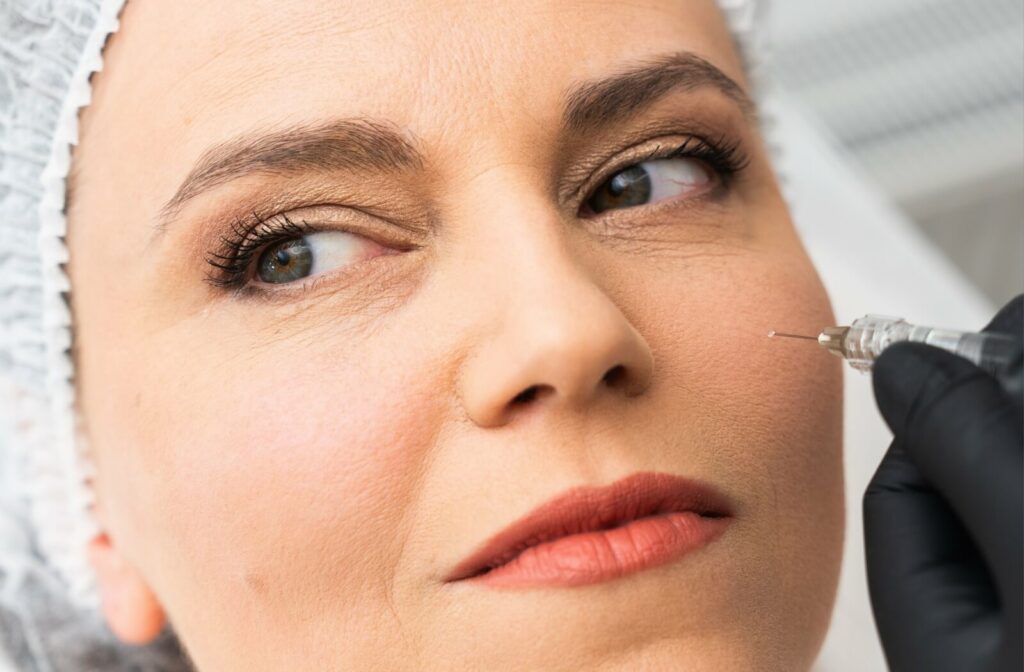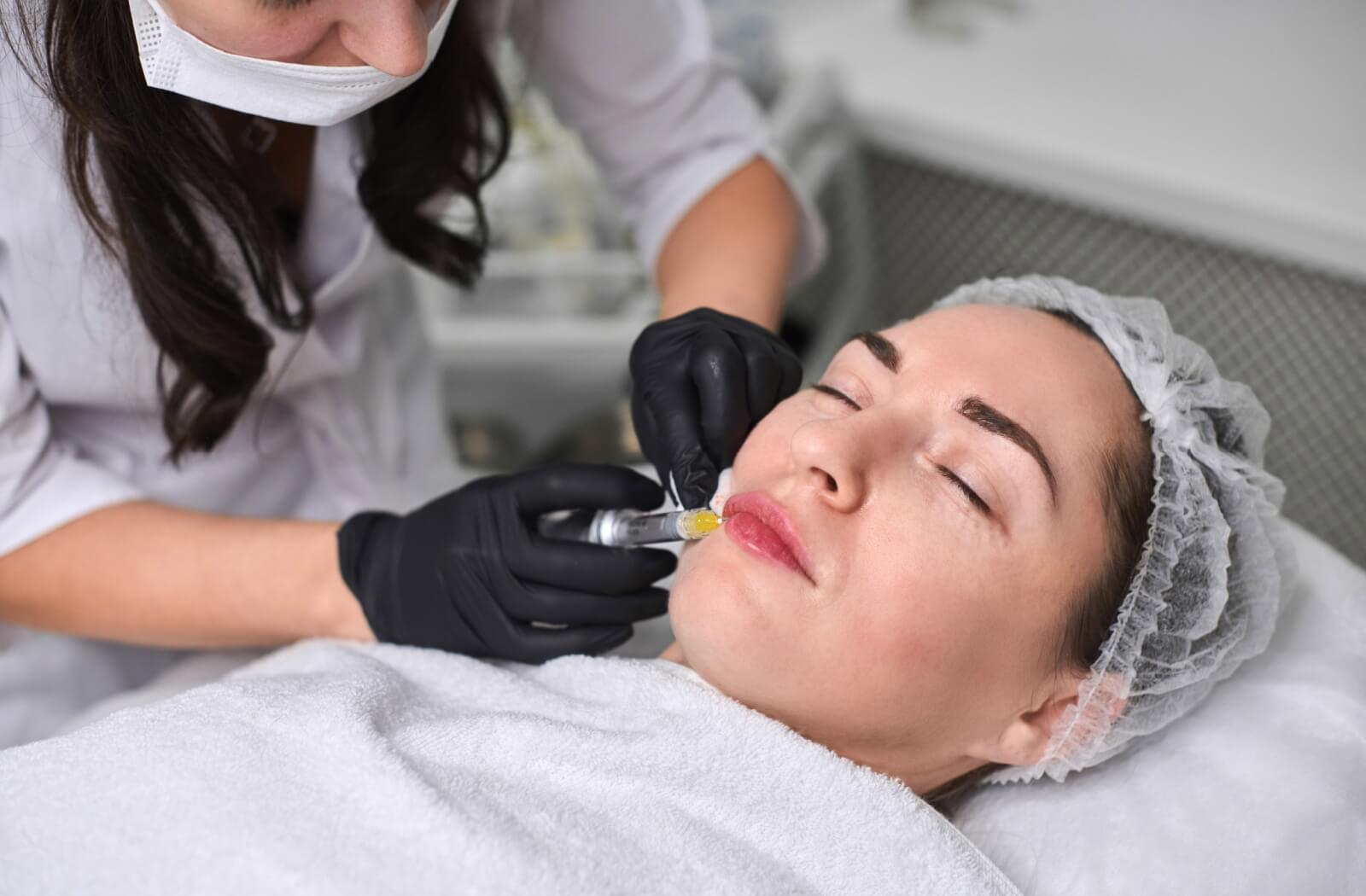Dermal fillers are a popular way to enhance natural features, smooth fine lines, and restore lost volume—all with minimal downtime. Whether you’re new to esthetic treatments or looking for a refresher, one of the most common questions is: How long do dermal fillers actually last?
Most dermal fillers last 6–18 months, depending on the type of filler, the area treated, and your body’s natural metabolism. Some longer-lasting formulas can stay noticeable for 2 years or more with proper care.
If you’re considering fillers or planning the next visit to your esthetician, understanding their longevity can help you make the most of your results.
What Are Dermal Fillers?
Dermal fillers are injectable treatments designed to add volume beneath the skin. Most are made from hyaluronic acid (HA), a naturally occurring substance that helps retain moisture and plumpness.
Fillers are commonly used to smooth wrinkles, lift facial contours, and enhance areas like the lips, cheeks, and jawline.
Injectable fillers are minimally invasive and completely customizable. From subtle enhancements to full-face rejuvenation, fillers can achieve natural-looking results without surgery or extended recovery time.
Are Dermal Fillers Safe?
When performed by a trained professional using FDA-approved products, dermal fillers are very safe. The most common side effects are mild swelling, redness, or bruising around the injection site, which usually resolves in a few days.
Hyaluronic acid fillers are also reversible. If you’re ever unhappy with your results or experience complications, they can be safely dissolved using an enzyme called hyaluronidase.
How Long Do Different Fillers Last?
The lifespan of your results depends on the type of filler used, where it’s placed, and how your body metabolizes it. Here’s what you can expect:
- Lip fillers can last 6–12 months
- Cheek fillers can last 12–18 months
- Under-eye (tear trough) fillers can last 9–12 months
- Nasolabial folds can last 6–12 months
- Jawline and chin can last 12–18 months or longer
Thicker, more cross-linked fillers tend to last longer and are often used in areas with less movement. Softer fillers used in dynamic areas (like the mouth) typically break down faster due to facial expressions and muscle activity.
What Affects How Long Fillers Last?
Even with the same type of filler, your results may last longer—or fade sooner—based on a few key factors.
The Filler Formula
Hyaluronic acid fillers like Juvéderm and Restylane vary in consistency. Thicker formulas used in deep injections tend to last longer than thinner, more flexible ones designed for delicate areas. Non-HA fillers like Radiesse or Sculptra, which stimulate collagen production, can last 18–24 months or more but are not reversible.
The Treatment Area
Areas that move a lot—like the lips, around the mouth, or smile lines—will naturally metabolize filler faster than less mobile areas like the cheeks or temples.
Your Body’s Metabolism
Some people break down fillers more quickly than others due to their metabolism, activity level, or genetics. If you’re very active, results may fade faster.
Lifestyle Habits
Sun exposure, smoking, and lack of hydration can all speed up filler breakdown. Likewise, consistent skincare and sun protection can help your results last longer.

Tips for Making Fillers Last Longer
You can’t control everything, but you can take steps to extend the life of your filler by:
- Staying hydrated
- Hyaluronic acid loves water; drinking plenty of fluids helps maintain plumpness
- Use sunscreen daily
- UV rays can break down skin support structures & filler faster
- Avoid smoking
- Smoking can speed up aging & shorten the lifespan of your results
- Stick to a good skincare routine
- Healthy, well-moisturized skin helps maintain smooth, long-lasting filler results
- Schedule enhancements as needed
- Maintenance appointments help preserve your look over time
When to Get an Enhancement
Dermal filler results fade gradually, so you might not notice the change immediately. Here are a few signs it might be time for a refresh:
- Loss of definition in lips or cheeks
- Facial volume looks less symmetrical than before
- It’s been 6–12 months since your last treatment
- You have an event coming up & want to look your best
Touch-ups can be subtle and prevent the need for a full re-treatment. Many people find that a once-a-year schedule works well for maintaining results.
Fillers Can Offer Customizable Enhancement
Dermal fillers offer a customizable, nonsurgical solution to enhance your natural features. With results that can last up to 2 years in some cases, they can be a smart investment when you want noticeable but not overpowering changes.
Whether you’re looking for subtle lip volume, a refreshed under-eye, or balanced cheek contouring, working with an experienced injector makes all the difference.
Ultimately, the goal isn’t to change how you look—it’s to help you look like the best version of yourself.
What If Fillers Aren’t Right for Me?
While fillers are versatile, they aren’t always the right solution for every esthetic goal.
Your provider may recommend alternative treatments like microneedling, radiofrequency, or dynamic facial stimulation if you’re looking to improve skin texture, boost collagen, or address deeper structural concerns.
The right approach is always a personalized one. A good provider will take time to understand your goals, assess your features, and recommend options to help you achieve effective, natural-looking results.
Natural Results & Thoughtful Care
At The Ivory Dental Co., we offer dermal filler treatments designed to complement your features, not overpower them. Our team takes a personalized, conservative approach to create smooth, subtle, and radiant results.
Ready to refresh your look? Book your consultation today, and let’s talk about how long your results can last—and how we can help you love what you see in the mirror.





